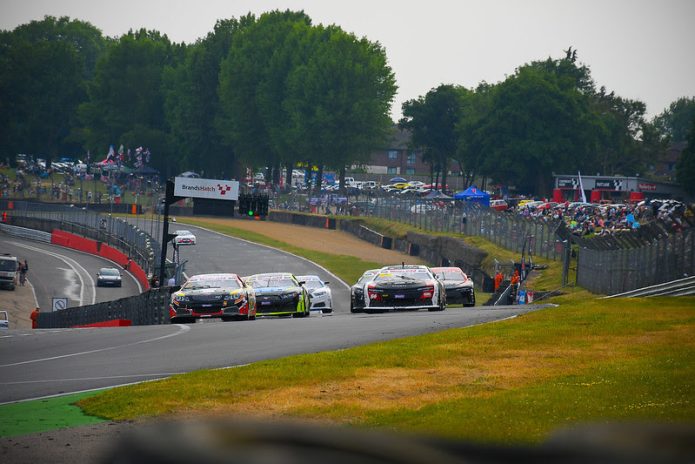Racing cars have always been at the forefront of automotive technology, constantly pushing the boundaries of speed, agility, and performance. For those looking to take their racing skills to the next level, understanding how to maximize performance on the track is crucial.
Whether you’re a seasoned professional or a novice just starting, knowing the ins and outs of racing car dynamics can make all the difference in achieving success on the track. If you’re looking for an affordable way to get into racing, consider exploring used cars for sale in Hobbs, NM. These vehicles offer a great entry point for those eager to understand racing car dynamics without breaking the bank.
From mastering the art of cornering to fine-tuning your vehicle’s suspension, every aspect of racing car performance is interconnected and plays a vital role in determining your success on the track.
With the right knowledge and techniques, you can optimize your racing car’s capabilities and achieve peak performance in every race. So buckle up and get ready to take your racing skills to the next level with these expert tips that will help you dominate the track like never before.
Mastering apexes enhances cornering precision:
One critical aspect of achieving optimal performance on the track is mastering apexes to enhance cornering precision. By understanding the importance of hitting the apex at the right moment, drivers can significantly improve their overall lap times and race outcomes. Apexes serve as crucial reference points that dictate the ideal trajectory through a turn, ensuring that the vehicle maintains the shortest and fastest line possible.
By honing the skill of hitting apexes with precision, drivers can maximize their cornering speed and efficiency, ultimately gaining a competitive edge over their opponents on the track.
Fine-tuning tire pressure optimizes traction:
Optimizing tire pressure is another fundamental factor that greatly influences a racing car’s performance on the track. Fine-tuning tire pressure can significantly enhance traction, grip, and overall handling, thereby allowing drivers to push their vehicles to the limit with confidence. When tire pressure is too low, it can result in increased rolling resistance and reduced stability, affecting the car’s ability to navigate corners effectively.
Conversely, overinflated tires can lead to decreased contact patch and traction, compromising acceleration, braking, and cornering capabilities. By meticulously adjusting tire pressure to the manufacturer’s specifications or based on track conditions, drivers can optimize their racing car’s performance and ensure peak traction levels for superior on-track results.
Balancing throttle control enhances acceleration:
Mastering the art of balancing throttle control is paramount in achieving maximum acceleration on the track. By delicately modulating the throttle input, drivers can precisely manage the power delivery to the wheels, optimizing acceleration while maintaining control of the vehicle.
Smooth and precise throttle control prevents wheel spin, ensuring that the power is efficiently transferred to the track surface for enhanced acceleration out of corners and down the straights. Utilizing throttle control effectively allows drivers to exploit the full potential of their racing car’s engine power, translating into quicker lap times and improved overall performance on the track.
Aerodynamic adjustments improve speed efficiency:
To further enhance the performance of a racing car on the track, a crucial aspect to consider is the implementation of aerodynamic adjustments. These modifications play a key role in improving speed efficiency by reducing drag and optimizing downforce. By fine-tuning the aerodynamics of the vehicle, race teams can minimize air resistance, allowing the car to slice through the air more effectively, thus increasing its overall speed capabilities.
Additionally, adjustments that enhance downforce help improve stability and grip, enabling the driver to maintain higher speeds through corners and straightaways. This focus on aerodynamics underscores the importance of precision engineering and design in maximizing a racing car’s performance potential.
Precise braking minimizes lap times:
Ensuring precise braking techniques is paramount in the pursuit of minimizing lap times on the track. The ability to apply accurate braking pressure at the right moment can significantly impact the overall performance of a racing car. By mastering the art of braking, drivers can effectively control their speed, navigate corners more efficiently, and accelerate quickly out of turn.
Consistent and well-timed braking not only aids in maintaining stability and control but also optimizes the flow of the race, enabling drivers to shave valuable seconds off their lap times. This fundamental aspect of racing requires a blend of skill, timing, and finesse to achieve optimal results on the track.
Final Verdict:
implementing these expert racing car tips can significantly enhance performance on the track. From optimizing tire pressure to mastering cornering techniques, every detail can make a difference in achieving optimal results during races. As professional racers often emphasize, consistency, practice, and attention to detail are key components in the pursuit of success on the track.
By incorporating these tips into your racing strategy and continuously refining your skills, you can work towards maximizing performance and gaining a competitive edge in the thrilling world of racing. Remember, the track is where precision meets passion, and with dedication and a strategic approach, you can excel in this exhilarating sport.
- NASCAR Cup & Xfinity Series Races at Nashville Superspeedway Presented on NBC and USA Network This Weekend - June 27, 2024
- Soaky Mountain & Wilderness at the Smokies Make a SPLASH in NASCAR Sponsoring No. 4 Dawson Cram & No. 07 Patrick Emerling to Beat the HEAT @ Nashville - June 27, 2024
- IMSA Delivers Substantial Live Coverage for International Fans Through YouTube, Greenlight International - June 27, 2024


